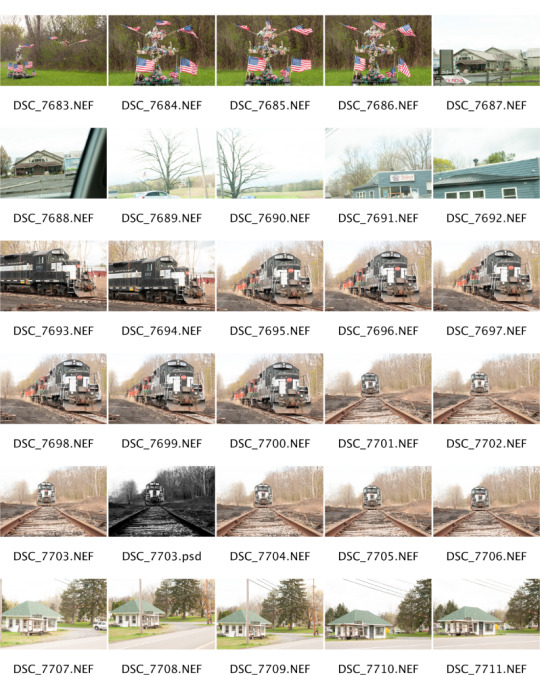Text
Dr. Temeka N. Ellington: The Concept of "Good" Hair: How did it start and why is it still prevalent?
What stood out most to me from Dr. Temeka N. Ellington's talk, "The Concept of "Good" Hair: How did it start and why is it still prevalent?" was her personal story of how she didn't know what her natural hair texture was like until she was in her mid 20s. My privilege is showing, but I truely had no idea that someone could go their whole childhood without having natural hair. I have semi-curly hair, but it still takes 3 hours to straighten.
There are also laws, the CROWN Act., adopted by some, NOT ALL, of the states that say that people can't discriminate against natural black hair. This means that in many states, it is totally legal to discriminate, separate, and even fire people if the boss doesn't like the way they wear their hair. This is crazy. Up until January 2, 2020 this type of discrimination was legal in California. 2020. That was last year.
Like discrimination based on skin color, hair based discrimination began because of slavery. Black people wanted to be treated the way whites were treated. This led to them trying everything in their power to look more like white people. This included skin bleaching, as well as changing their hair to look more tame, straight, and dying it to make it lighter. We as a society are still feeling the effects of our ugly history. Things that shouldn't need to be said, like that people can wear their hair however they'd like, still need to be said. Of course I'm glad they are getting said, but I'm sad they have to. It really should be obvious.
1 note
·
View note
Text
My story




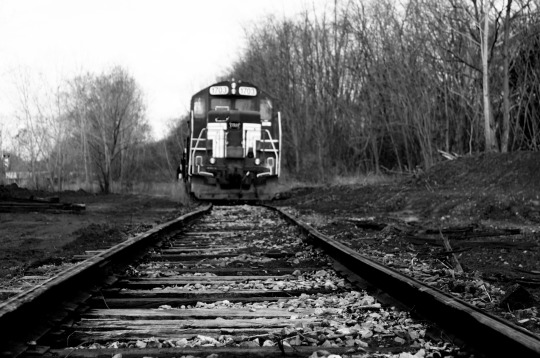
To tell a story through photographs..
Originally, I wanted to tell a story of past trauma. I was in a motorcycle accident almost a year ago, and my body will never be the same. There are still places on my leg that are swollen and don’t experience feeling. The scar on my abdomen hasn’t faded. My bike, though fixed for a moment, once again doesn’t work. But this is a previous story. Photographs can only capture the present, so I changed direction.
I travel between home and school with regularity. The home I grew up in isn’t too far away, even with COVID restrictions. Each time I have to leave that home and come back to school, I ride along with my rollercoaster of emotions. With any familiar drive, be it to work, the grocery store, or (for me) school, there are landmarks along the way. I leave my house, go through the village, past Broadway rd., into and out of Auburn, and eventually to Geneva.
I photographed many of the landmarks that I have. For me, Geneva isn’t a happy place. My family (including the majority of my chosen family) doesn't live here. Assignments tend to give me anxiety because I want to do well. Instead of doing them, or starting early, I choose to ignore the problem as long as I can. I procrastinate. In the short term, I can watch some stupid TV show on Netflix, or scroll online and it eases the anxiety because then I don’t have to think about deadlines. In the long term, it pushes me further into depression and away from friends. I always have something I’m supposed to do, so I can’t ever hangout. I end up spending a lot of time in my room.
Back to the photographs. Flowers, village, broadway, park, train. I used the colors to express how different places make me feel different things. Happy, a sense of foreboding, sad-nostalgia, anxious, and depressed. The closer I get to school, the worse I feel. I don’t love talking about my struggle, so this project was pretty difficult for me. There were also some better photographs I took that I didn’t include because they did not speak to me as these did. Maybe others will hear them too.
#intro to imaging#pictures#photography#my story#my journey#working on it#mental health#landmarks#art
0 notes
Text
Shadow Says



Shadows are beautiful. They can make patterns, provide some comfort on a hot day, and even tell time. When creating photograms, all that we capture are shadows. In the first test strip I made, there were shadows, but because I was allowing light from different angles at different times (by covering part of the paper), shadows within the shadow showed up. I was very excited. I went to take a photogram after figuring out the exposure, and the double shadow effect wasn’t there. That’s when I realized that angles played a huge role in what shadows were created and captured.
Using this idea, I wanted to figure out what angles could capture different shadows. I used a pen and a chapstick for their ability to stand on their own, and their different heights. After some calculations, I found the angles to be about 66 degrees and 61 degrees between the tip of the shadow and the light respectively. This means that the chapstick is further away from the light than the pen.
The sun works the same way. The angle between the sun and the ground is much less at the beginning and end of the day than the middle. This is how sundials work. In the Northern hemisphere, it is 12 when the Sun is due South, and the shadows it creates are due North. Every 15 degrees is an hour. The sundial we have at school has a semicylinder with a slit of light in the center of the flat side. The light passes through the slit onto the time of day. Shadow says... it was a little past 2.
1 note
·
View note
Text
In Plato’s Cave by Susan Sontag
The first chapter of “On Photography” by Susan Sontag, “In Plato’s Cave,” tells the story of how photography grew-up, in a way, into what it is today. It began with the rich and the committed, and then became available to the masses. People view photos as facts, as evidence. In the crime shows, they find clues on surveillance cameras. People can, I'm learning, fairly easily doctor photos. Even if they don’t, photographers take many, many pictures of a scene to ensure they get the right shot. Photographers are influencing their audience with their perspective as much as any other form of art.
Photographs of extended family are used as evidence of their importance and relation. People travel to different places where they don’t know what to expect and bringing a camera and taking pictures can act as a barrier between the event and the tourist. It also serves as evidence that they really were at their destination. I understand that a lot of people do this, and the logic does make sense. Personally, I much prefer to be in the moment and experiencing the event (on the hike, in the crowd at a concert, experiencing a new location) than seeing everything through the lens of a camera.
When speaking about photographs of brutality, Sontag says, “Part of the horror… comes from the awareness of how plausible it has become, in situations where the photographer has the choice between a photograph and a life, to choose the photograph. The person who intervenes cannot record; the person who is recording cannot intervene.” This is undeniably true, and yet I struggle to wrap my head around it. The photographer must focus on his or her own event; shooting the photograph.
Taking photographs, shooting photographs is violent, sexual, and nostalgic all at once. Sontag said, "When we are afraid, we shoot. But when we are nostalgic, we take pictures." Photographs preserve moments in time. Little snapshots of whatever the photographer deems important enough to save and remember. The same terminology can be used for guns as well as cameras. We load bullets as we do film, aim, and shoot. The camera is a far safer alternative. Old images of horrific events tend to be valued more for their age than for what they say. We are shown so many images of terrible things that we are more easily able to discard them and go about our day as if we never saw them at all.
2 notes
·
View notes
Photo
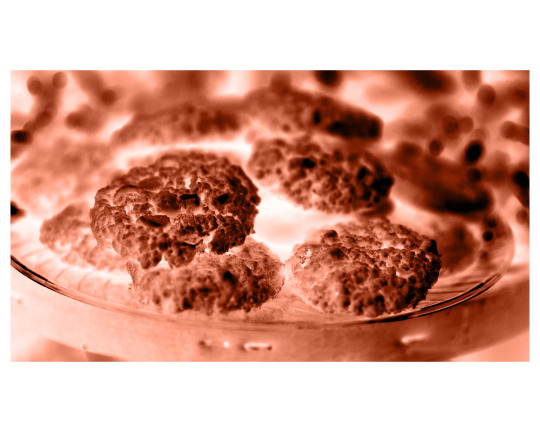
My first digital negative!!
0 notes
Photo
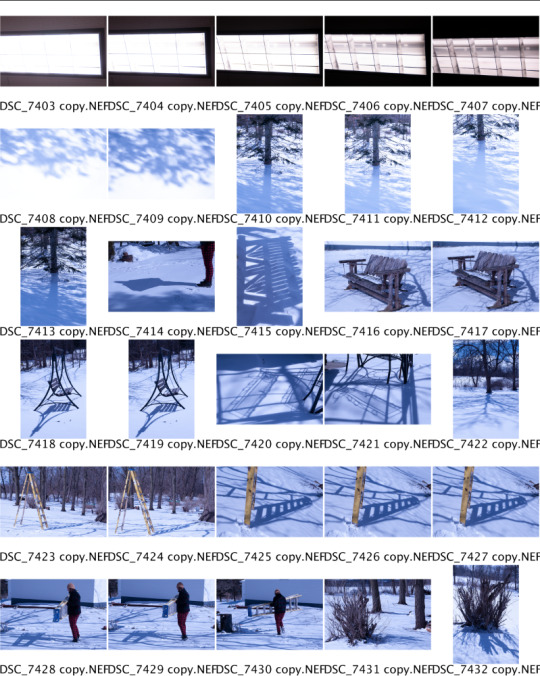





These are my contact sheets for most of my photos for the Photography Is Magic assignment.
0 notes
Photo





I started thinking more and more about COVID-19 with the recent half shutdown of campus. As I kept looking for things to photograph, I found myself fascinated by things with bars, grids, and structured separations. Restraints. I'm not unhappy that the school was mostly shut down, I'm unhappy about COVID in general. These focus on light, shaddows, and lines or repetition of a pattern. It's as if you're stuck inside or stuck outside, and both ways definitely make you think (or at least, it makes me think).
Personally, I seem to get stuck in my head a lot. I overthink simple tasks (such as writing) and suddenly am unable to write a single sentence. In the first photo, I love the way the reflection of the light behind me distorts the grid of the window. It’s as if, even though things hold us back, light can move anything, and images can move people.
In my last photograph, I was thinking about finding a fence during the bright sunlight. Instead I came across a sculpture. The sculpture has wooden planks, and when I looked through a hole where a knot fell out, there were just more bars. There will always be challenges in life, one after the other. Each time you defeat some sort of obstacle, there is another lurking in the shadows (pun intended).
1 note
·
View note
Photo



In Nakeya Brown's lecture, “Better Than Good: Black Hair and the Art of Nakeya Brown” she spoke about the concept of good hair. She began refuting this concept in 2014 when her daughter was born. When Nakeya was growing up, “good hair” meant straight or wavy hair, but specifically not black hair. Nakeya took ironic photographs of people treating hair as food. They were images of people eating hair, hair right next to a plate of food, and hair on a fork. This was startling. Why would someone eat their hair? It's a play on good. How can hair be good? It's not food, it doesn't taste good.
Brown then moved to her still lifes. She photographed items and objects of her past and of specifically black women's past. In “Hair Stories Untold,” there is one with a hot comb and an oven mitt as well as a thing from a gas stovetop, called “Hot Comb and Mitten”. I personally don’t have black hair, so I never knew that this is how people straightened hair. Nakeya Brown said that growing up, she straightened her hair once this way. For her, that image brought back long hours at the stove and the smell of burning hair.
Brown also spoke about the beauty industry. She went to her local, black owned beauty supply store frequently. Here, she got ideas for “Cameo Appearances.” All the models on the products were starting to look the same, just with different things on their hair. There was a wig cap, weave cap, bonnet, and on each package, the black body sort of disappeared. In the first section (with people eating hair) Brown asked her models (friends) to come as they were. This meant that in each image, the hair on top of their head was what they wore to everyday life. I think instead of allowing her subjects to fade into a similar type, this brought out their uniqueness.
To find more of Nakeya Brown’s work, go to http://www.nakeyab.com/
1 note
·
View note
Photo
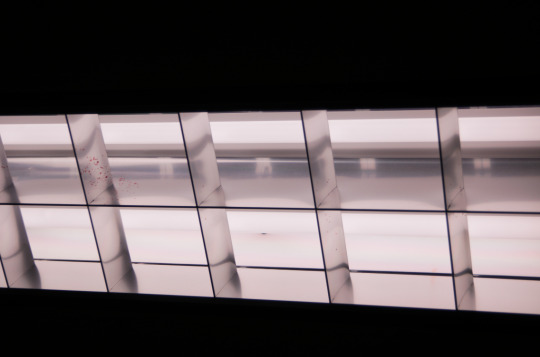

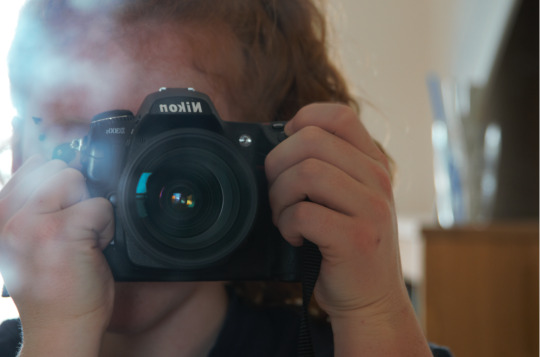



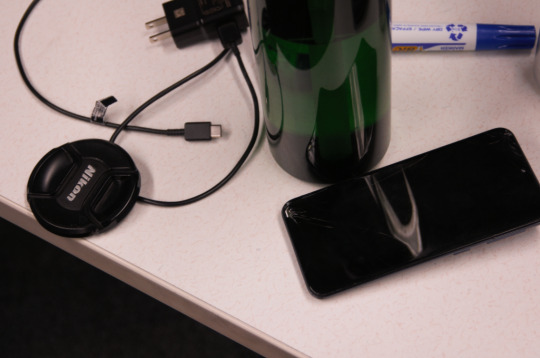




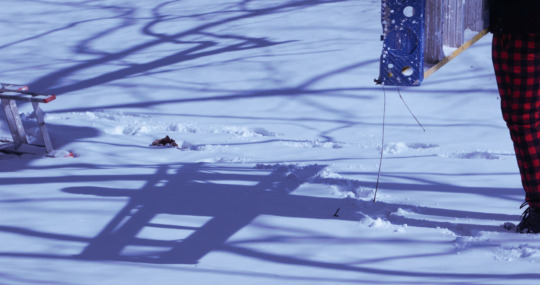



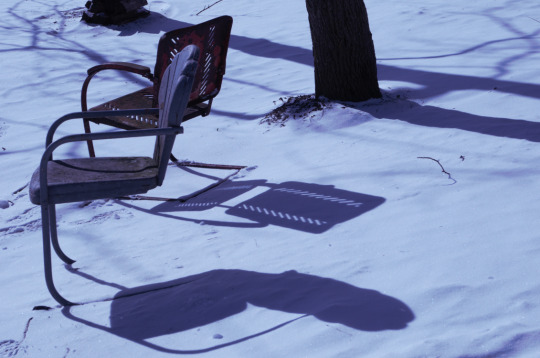

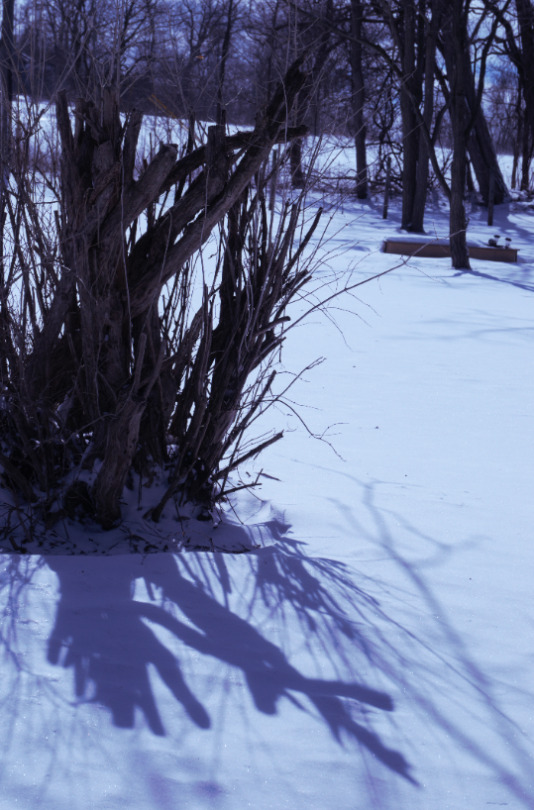








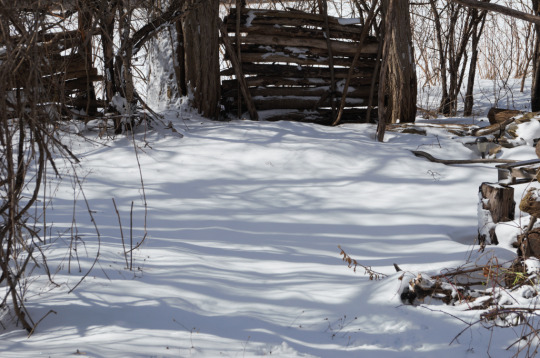







I’ve shot about 150 photographs so far, with a focus on light and shadows. I’ve learned that sometimes the shadows are even more interesting than the object itself. There is an evergreen tree that has a shadow of a “perfect” Christmas tree, but the tree itself is just growing, like a normal evergreen rather than a full Christmas tree. Many of the images aren’t the right color because I keep forgetting to switch the white balance to the setting where I was shooting. After I went inside that cold day when most of these were taken, I was able to see the screen of my camera and realized my mistake. I got to go back out into the cold!
While Brad was walking around the tree, I had a momentary lapse in memory and completely forgot how to allow for a bit of blur in movements (low shutter speed). I shot 17 photographs trying to figure it out again. He got dizzy.
I was also able to shoot some photos that I had attempted to take with the camera obscura that did not come out well.
0 notes
Text
2/25/2021
No more freckles

clean photograph

Mount Rushmore meets old picture that got stuck to something once meets bad photoshop :)
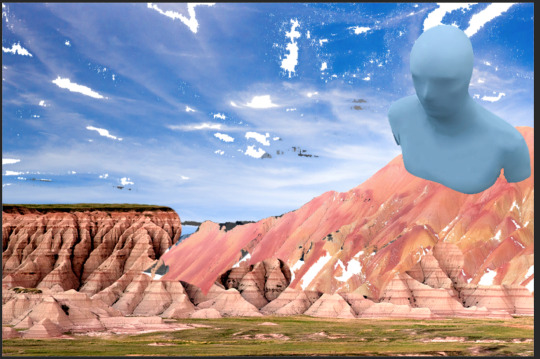
0 notes
Photo





Exercise 2:23
I made wonkey planes!
0 notes
Text
First attempts at my digital camera

f/4.5

f/9

shutter speed: 1/30. I had to put the camera on the ground because I haven’t bought a tripod yet, but I like the woodgrain that otherwise would’t have been noticed.

shutter speed: 1/350

fucus on pattern

focus on contrast

focus on line

focus on shape. The lighting is a bit off in this one because I kept forgetting to change it for the specific space we were in, but my model was very excited to be in the picture even though the focus is not on him.
I walked into the Houghton House and was amazed by what I found so I thought I’d share it with other people that may never have been there. These photos were a way for me to get to know my camera and better understand how it works. I didn’t know that there was a setting for the type of light that was being used until after shooting about 200 photos (should have read the manual sooner). After viewing my images, I want people to come away with a greater appreciation for the ordinary. When looked at as art, even the most mundane, everyday object can come across as beautiful. For example, one of the photos is of a chimney and the bricks are just so appealing to me and I want to share it with the world; shout from the rooftops about bricks. SHOUT WITH ME!
I hope that other (mostly) non-art students here will see my photos and realise that the art campus is really cool, and not just ignore emails they get about galeries in the Houghton House. My sleep schedule isn’t what many would call normal. I am awake when a lot of people are sleeping, so all of my light is artificial. This is not ideal for some of the photos that I would really enjoy taking (like the ones outside of all the sculptures), but it gives a unique perspective of campus at night.
0 notes
Text




I started thinking more and more about COVID-19 with the recent half shutdown of campus. As I kept looking for things to photograph, I found myself fascinated by things with bars, grids, and structured separations. Restraints. Im not unhappy that the school is mostly shutdown, I'm unhappy about COVID in general. These are what I have so far (I plan to find and photograph more). The first is a window on a door with lights on the other side and one in the reflection. Ot was exposed for 38 minutes and had some light seep in from the top. The positive was obtained with /f 8 for 18 seconds. The next one, I explained in a previous entry. The third one was the test strip of the photograph from the hallway in my dorm (/f 16). It doesnt have bars or a grid in the image itself, but the way the strips segment the photo gives it a similar feel to me. The last image is a negative from inside the Carriage House looking back toward the graveyard (exposed for 30 seconds). I love the contrast the window muntin gives to the nature beyond. It's as if you're stuck inside or stuck outside, and both ways definitely make you think (or at least, it makes me think).
#art#photography#camera#camera obscura#intro to imaging#pinhole camera#taking photos#college dorms#covid19
0 notes
Text




This the view from my dorm room. The first photo, the negative, was exposed for 20 seconds. The second, was the first test strip. The /f was too low, so I had to do another one at /f 16 to actuallybe able to use it. The last is the final image that I received after choosing an /f of 16 and exposing for 20 seconds. I really like the was the lines from the window screen showed up and changed the way the camera obscura captured the light from the scenery. Originally, I was hoping that everything would be clear, so we would be able to see the scene with lines going through. The more I looked at it the more it made sense with the slightly blurry look. Dorms themselves are slightly blurry. They aren't a home, or an apartment, or even usually a favorite place, and yet we spend so much time there.
#camera obscura#college dorms#photography#art#intro to imaging#pinhole camera#taking photos#campus scenery
0 notes
Text

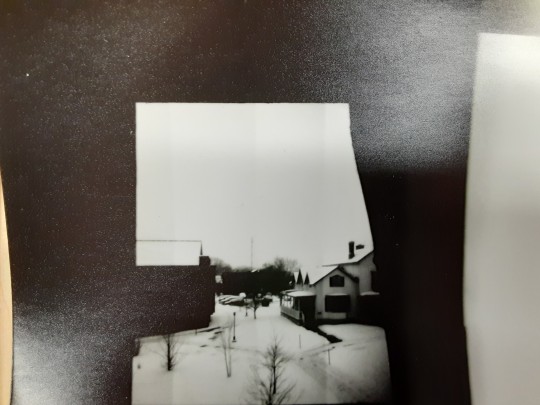

The first photo, the negative, was exposed for 11 seconds. The second, was the first test strip I've ever done. The last is the final image that I received after choosing an /f of 8 and exposing for 15 seconds with the enlarger (even though we cant make the picture bigger, it's still used to create the positive image).
0 notes



